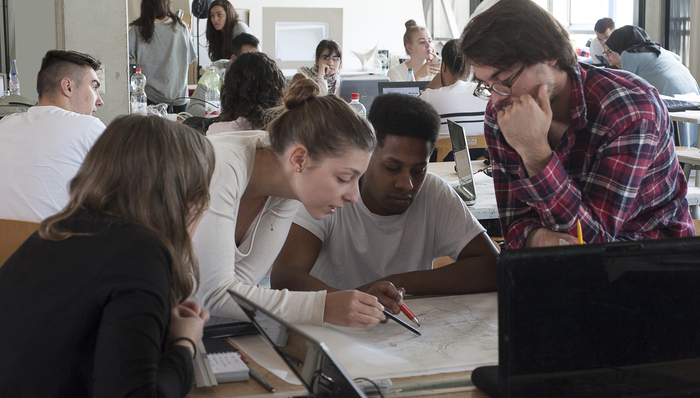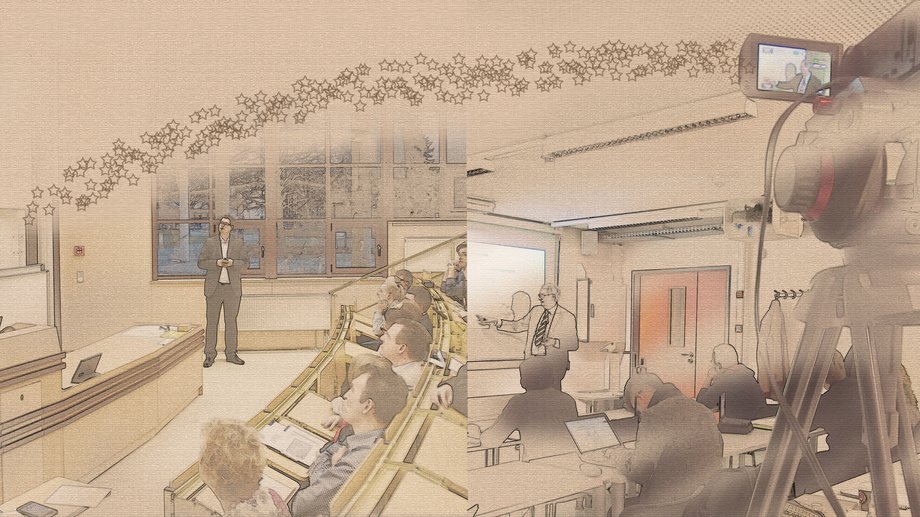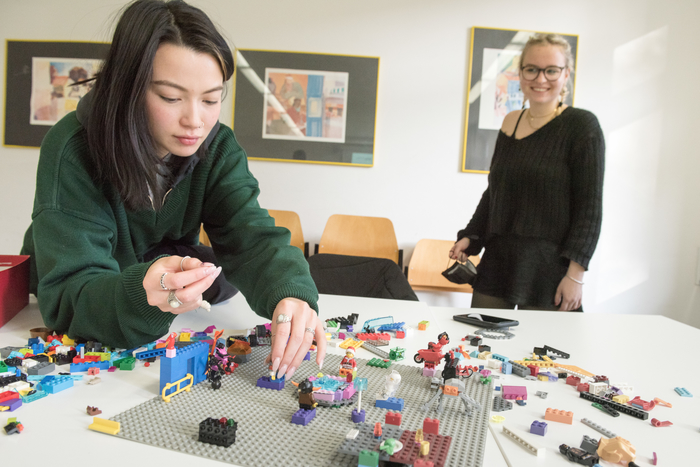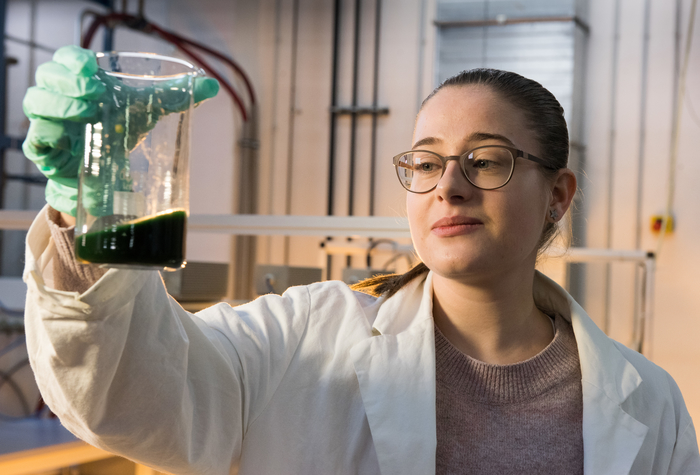Classroom events
For reasons of motivation, it is advisable to enrich classroom events interactively. In the following, we will show you which possibilities the different event formats offer with regard to enrichment.
1 Enrich lectures

Lectures usually contain a lot of theoretical input. The number of participants can vary greatly, and the diversity of the participants in terms of prior knowledge, language skills, and private commitments increases with the number of participants. So take the learners with you on the way. We show you a few possibilities of interactivation.
- Audience-response systems for live questions, quizzes, feedback
- Incorporate videos, e.g., to increase visualization
Live connection of external experts, e.g. to create practical relevance
Have you ever thought about turning everything upside down? Take a look at "Flipped/Inverted Classroom".

Context:
A course is to be held over different premises.
Problem:
Not all instructors and students can always come to the same location, as travel may be too far or too costly. As a result, important content may be missed or not presented.
Solution:
Synchronous video and audio transmission (live streaming) enables communication that is close to the presence. Other options include chats and screen broadcasts.
Example:
The curriculum of the English-language master's program "Heritage Conservation and Site Management" at BTU Cottbus-Senftenberg provides for close cooperation and even a semester abroad with Helwan University in Cairo. The module "Introduction to Heritage Management" will be transmitted in real time from Cottbus to Cairo by means of a video conference. For this purpose, the MMZ offers the free use of the video conferencing software Adobe Connect via the learning platform moodle or via direct dial-in.
2 Actively design seminars

Seminars are characterized by a smaller number of participants. In smaller groups, it is particularly useful to actively involve the learners.
- Peer-to-peer teaching videos - Let students explain topics in their own words and formats, this increases transfer performance.
- Playful elements, to increase motivation - Playful elements or even serious games also lend themselves wonderfully to teaching with adults. Use rankings or competitions, incorporate content into stories (storytelling) or activate through game apps or serious games, such as simulation games.
- Collaborative group work on the interactive whiteboard - So learners are flexible in place and time regarding the editing process and at the same time you can track progress.
- Project work can advance the development of so-called Future Skills in particular through its transdisciplinary character. Future Skills are competencies that are expected to become particularly important on the labor market in the next five years. The use of digital project logbooks, project management software or e-portfolios [and the application of special software or programming exercises] create opportunities for reflection and a deeper understanding of practice in addition to variety.
3 Prepare labs interactively

Work in the laboratory is of a very practical nature. Nevertheless, there are often rules or prior theoretical knowledge that needs to be taken into account in everyday laboratory work and which can be conveyed in a straightforward manner using digitally supported elements.
- Virtual lab guide - Let the participants get to know the lab environment interactively in advance, for example by taking a virtual tour with H5P. Make the virtual tour informative and fun, e.g. in the form of an exit game. By awarding points or subsequent summative e-tests/quizzes, participants can complete the virtual lab driving license in your very own individual lab, independent of location. This way, learners are prepared before they even arrive and can make practical use of their time in the real lab.
- Electronic quizzes can also help learners learn about behaviors or set-up items in advance. Provide questions and have participants research processes or items. This way, you become active yourself, which makes transfer easier!
- Interactive videos can also provide an initial insight into the laboratory environment and processes in isolation from a complex virtual tour. Enrich the videos with activating questions and tables of contents that encourage reflection. In this way, you create orientation and individualization in addition to activation.
